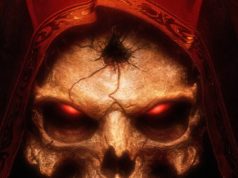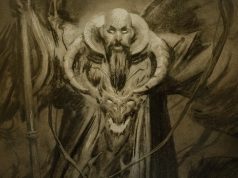Ahogy a férfi Demon Hunter esetében is történt, bővebb információkat ezúttal is riportok formájában adtak a fejlesztők, most azonban a Followerek volt a fő téma. Amit tudni lehet eddig róluk:
- Lyndon, a Scoundrel (csibész), vérbeli csirkefogó mind testben mind lélekben. Kingport városából származik. Íjjal és számszeríjjal harcol.
- Kormac, a templomos. Küldetése szent tekercsek megtalálása, melyeket még Archbishop Lazarus tulajdonított el. Főként tankként funciónál.
- Eirena a varázslónő múltja a köd homályába vész, egy titokzatos prófátát követ. Főleg támogató (buff) és bénító, lassító (crowd control) varázslatokkal rendelkezik.
- A Followerek csak akkor elérhetőek, ha egyedül játszik az ember, mind Single mind Multiplayer üzemmódban, amint új player csatalkozik a játékhoz, a legközelebbi városba kerülnek. Ha ismét egyedül játszik az ember, akkor újfent csatlakozik bérencünk kalandorunkhoz.
- Mindegyik bérenc saját egyedi grafikával, hanggal és történettel rendelkezik.
- A játék során bármikor elérhetőek és válthatunk köztük, attól fogva amikor csatlakoztak hozzánk és karakterünk szintjéhez igazodnak, így nem kell felszintezni őket ha újra váltunk.
- A segédek nem halnak meg csak rövid időre elvesztik az eszméletüket, és magukhoz térnek, ha néhány másodpercig nem harcol karakterünk. Ezen kívül potionokkal nem lesznek gyógyíthatóak, viszont a Health Globe-l igen, mindegy hogy hősünk vagy a bérenc veszi fel azt.
- Okosabbak lesznek, mint a Diablo 2-ben, és nem lehet őket összetéveszteni ember irányította játékosokkal.
- Skilljeik 4 tier-be (sorba) lesznek kategorizálva 5 szintenként, tehát lvl 5,10,15,20. Viselkedésük képességeiktől függően változik.
- Megfelelő aranyért cserébe, bármikor újraoszhatjuk képességeiket.
- Nem használhatnak Skill Rúnákat, az csak az ember irányította játékosok kiváltsága.
- A bérencek mindkét kezébe tehető fegyver, pajzsot is használhatnak, továbbá két gyűrűt és egy amuletet adhatunk rájuk, egyéb páncélt nem, ezen kívül lesz nekik egy speciális rájuk jellemző tárgy slot, melybe, pl. a Templar szent könyvet tehet, melyek buffolják a csatlóst és a játékos karaktert is.
- Mindegyik Followernek lesz olyan Skillje, ami növeli a Magic Findot és Gold Findot, melyekre még rájöhet a rájuk aggatott itemekből jövő MF és GF érték.
- Csatlósaink a Caravannal utaznak majd a többi fontos küldetésadóval és Artisanokkal.
- Bérenceinknek nem adhatunk parancsokat, hogy pl. támad, áll, védezik, a képességeiktől függ majd viselkedésük.
Leonard Boyarsky: The great thing about them is that they provide all of these options for the player. They all have different abilities that you can choose from; they can wear different kinds of weapons, rings and amulets. In addition, they also have different personalities and we have placed great emphasis on their background stories – they all have full voice-over and we have done lots of work to make them come to life. There’s the Scoundrel, the Templar and the Enchantress, and they all have their distinct personalities.
The Scoundrel is from Kingsport. He’s kind of disgraced and has been kicked out of the thieves’ guild. He’s a real thief in both mind and heart. His name is Lyndon and he acts kind of like the classical DPS character, he’s a guy that does damage from a distance.
The Templar is called Kormac and he’s a bit like the game’s Navy SEAL guy. He’s a member of the Templar order and they’re on this quest – they’re looking for some holy scrolls that were stolen by Archbishop Lazarus in Diablo I. He is good at absorbing damage, so he’s the kind of guy you’d wanna put up front.
Then we have the Enchantress – Eirena – whose past is shrouded in mystery. She follows a mysterious figure called The Prophet and is good at controlling groups of enemies. The player will learn more about her dark past as they progress through the main story.
Gameplanet: So at what stage of the game do you adopt these followers?
Boyarsky: As you’re running through the main story arc, you’ll encounter them doing similar things to you. They’re adventurers fighting the good fight. You’ll interact with them in their story and then they have reason to follow you and to help you in your quest. These happen in the first third of the game, they’re spread out a little bit. Once you’ve unlocked them you can keep them with you or send them back to town and choose which one you want.
Gameplanet: Do they each have their own inventory, can you assign them weapons and so on?
Boyarsky: They don’t each have their own inventory as such [but] they have two weapon slots that you can use for a two-handed weapon, dual weapons, or a shield and a weapon. They have two ranged slots, an amulet slot, and they also have a special inventory slot for a special inventory item that is unique to them.
AusGamers: What was the decision behind only having three followers, because it seems like a small number. Given that you’re utilising them to flesh out the lore more, a higher number might have been helpful. Did you guys have a higher number to begin with?
Leonard: No we were always planning on three. The reason we went with three—at least from a story standpoint—is because we put so much into them. Each one has so much to bring to the game in terms of their personality and story. They’re fully voiced, we put a lot of work into casting, recording and developing them and making sure that they were really polished. So having three in there that not only have different stories but also focus on different aspects of gameplay, felt like a really good number to us.
One of the things with Diablo that you always have to try and balance is that you want to have a good selection of things to choose from but you don’t want to overwhelm the player. You can only use one follower at a time, so if you had too many followers to choose from, it could become overwhelming and you might not want to deal with it.
AusGamers: How do each of their skill-sets compliment the various character classes that you’ve already revealed for the game? And in terms of the AI, do they dynamically react to the way that you’re playing? Obviously it’s not an overtly deep game in terms of combat tactics or recourse, but how have you differentiated their play-styles to work with the different player character classes?
Leonard: Well that’s somewhat up to you by the way you spec them out. If you give the Enchantress a thing called energy bomb—which is one of my favourite things that she does—she’ll cease that when the player gets down to a certain percent of health because it’s this big bomb that goes off. She automatically does that when you get down to a certain amount of health.
If you’ve specced out the Templar to be somebody that does more healing type things—backing you up more than up-front fighting—that’s just how he reacts to the world.
Does each character have their own upgrade tree?
The way it works is at specific levels, five, ten, 15 and 20, three skills will unlock and you can choose one of those three skills. They focus a lot on allowing you to make a Follower that suits you. Some players want to really maximise the amount of damage that they do so they can focus on abilities that increase the damage their followers do. Some really prefer the Follower to take more of a support role, they don’t like the notion of the Follower stealing kills from them or stealing some of their glory – in those cases you can make a follower who tends to be more in the background and provides you with buffs or heals or possibly debuff enemies with things like slows and other kinds of debilitating attacks. So based on your own personal play-style you can customise each Follower how you want.
Forrás:




